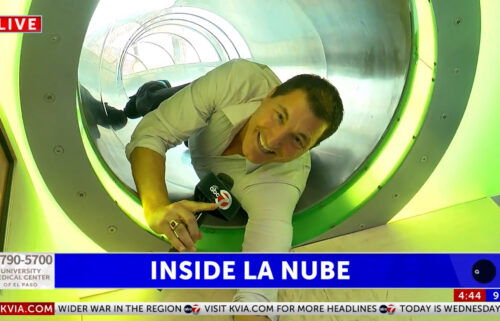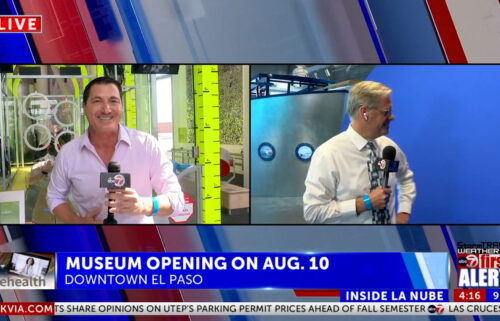Contact tracers overwhelmed by spike in COVID-19 cases in mountain counties
Click here for updates on this story
ASHEVILLE, N.C. (WLOS) — High levels of viral spread of COVID-19 in some mountain counties are outpacing the efforts to slow it — and it’s not just medical staff that are overwhelmed.
Those designated with the task of contact tracing, too, are struggling to keep up.
A News 13 investigation finds that’s challenging the state’s growing army of contact tracers, forcing some to ask whether it’s effective and whether counties have enough resources to protect residents.
News 13 delves into the strategy to slow COVID-19 and how resistance to the process leaves families exposed.
“I like to go donate,” said Jean Poteat, as she got out of her car at The Blood Connection in South Asheville.
Poteat said she makes a trip to The Blood Connection every two weeks.
“This time of year, they need it bad,” said Poteat.
Poteat, a registered nurse, became a regular donating platelets, working for the Red Cross.
“I was a match for a little girl in Johnson City that was on chemotherapy, so I knew where mine were going,” said Poteat.
Each time Poteat donates, she is tested for COVID-19.
“I check my COVID, and it was negative,” said Poteat.
Making the recent call she got from the Health Department, all the more frustrating.
“It made me mad that 13 days into a quarantine I knew nothing about, I got a call,” said Poteat.
A contact tracer told Jean she’d been exposed to someone who tested positive.
“It’s been 13 days; I’ve been roaming around, doing my thing as normal for 13 days, and you call me and tell me I’ve been exposed to COVID-19, and now I’m supposed to sleep in a separate bedroom, isolate myself from my family,” Poteat said.
There is frustration on both sides; those trying to do the contact tracing as well as those who hear of their exposure — many days too late.
News 13 brought up the issue when we sat down with Buncombe County Health Director Stacie Saunders.
“I would say that anytime during that 14 days, if a close contact is contacted, it’s important,” said Saunders.
It’s significant because data gathered, by a contact tracer or communicable disease nurse, directly impacts how counties and the state health officials react.
“Have you been to church in the last two weeks?” asked a contact tracer, making phone calls.
“It’s telling us a lot about where people are going, what activities they are participating in and if they themselves are the ones who are utilizing the three Ws,” Saunders explained about the importance of contact tracing.
That data collected by local health officials is also passed to the state epidemiologist to understand the virus’ cause and effect.
“It’s really a small percentage of cases that result in a large percentage of transmission. So, a lot of cases result in very little transmission,” said Dr. Zack Moore, Section Chief Epidemiology, N.C. Division of Public Health.
Near the end of October, the state finally started sharing that data with the public. The Clusters report shows community spread at retail or restaurants, and a recent spike at religious gatherings.
Even the report states it “underrepresents the full scope” of clusters. It’s only statewide data, but local officials say its reflective of individual communities.
“We’re always looking at how we can share information in a way that’s going to make it usable and useful for people so that they can help understand their risks,” said Dr. Moore, in response to the question, “What benefits are there for the more information you share?”
A George Washington University researchers’ tool estimates North Carolina needs 27,000 contact tracers to effectively trace COVID-19 cases. The state has around 2,500. That’s nearly 10 times fewer than what’s needed.
“The reality is, it’s not easy for a state health department or a county health department to turn around on a dime and hire hundreds of additional contact tracers, “ said Ed Salsberg, health workforce researcher at the Milken Institute for Public Health.
Salsberg has been a national leader in health workforce research, policies and data for more than 25 years. He currently serves on the faculty in the Department of Health Policy at the George Washington University School of Public Health.
Salsberg said, while the Contact Tracer Estimator they created is on the high side, it helps states or counties focus their efforts.
“The whole idea of contact tracing is to target your limitations on people and say, we only have to limit people who are at risk — those people who have been exposed,” said Salsberg.
That prevents further restrictions and shutdowns for the general public.
In Haywood County, COVID-19 cases have overwhelmed the county’s 5 full time tracers. The county saw 461 positive cases in November, which created more than 2,300 contacts, meaning about 460 for each tracer.
One call averages about 45 minutes, putting them about 100 cases behind, according to a county spokesperson.
The success of tracing depends on reaching contacts quickly.
“Most of our cases currently are being reported in less than 3 days between the lab test and report to public health,” said Dr. Erika Samoff, in charge of North Carolina’s contact tracing efforts.
Local health officials said to add 1-2 days for contact tracers to get the case and begin tracing; that means they’re reaching contacts about 5-7 days after a positive test at the earliest.
In Haywood County, health officials are now asking positive cases to alert their own close contacts, but a CDC study found North Carolinians can be resistant to share contacts with tracers.
Buncombe County is using an automated texting tool to keep up with contacts, freeing up tracers to keep making calls.
The week of Dec. 14, they were expected to add 20 additional staff.
Henderson County turned over its effort to Community Care of North Carolina, the agency contracted by the state to provide tracers and additional assistance to counties that need it.
“Contact tracing is one tool in the toolbox, but contact tracing in and of itself is not going to be enough to stop the spread of COVID-19,” said Moore.
Inefficacy is especially true when individuals aren’t honest about contacts. Buncombe County’s November tracing numbers were nearly one contact for each positive case.
Right now, health officials warn people they need to limit who they see.
“There is no such thing as no risk now, right? There are activities that are lower at risk and then clearly some activities that are higher risk,” said Saunders.
The state’s SlowCovidNC app provides another way for people to see whether they’ve been a close contact of a positive case.
By using Bluetooth, it alerts people if they have been in contact with someone who tests positive, but they must upload to the system that they’re positive.
While 350,000 have downloaded it, just 100 positive COVID-19 cases have amounted to 750 alerts, around Thanksgiving.
To find more information on contact tracing in North Carolina, click HERE.
If you have information you want to share, email Iteam@wlos.com.
Please note: This content carries a strict local market embargo. If you share the same market as the contributor of this article, you may not use it on any platform.




